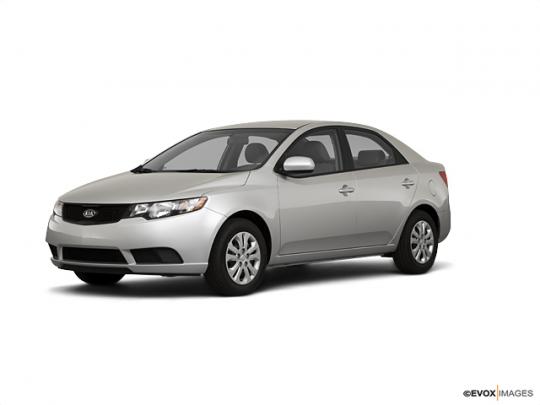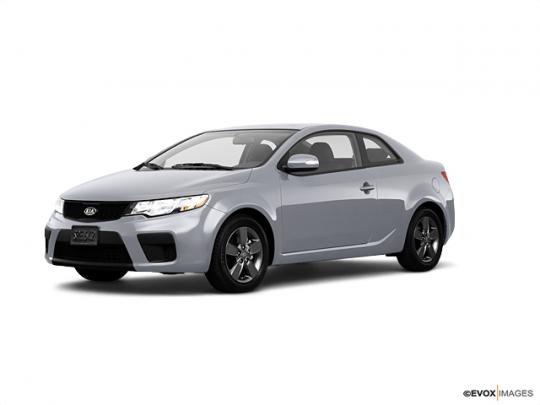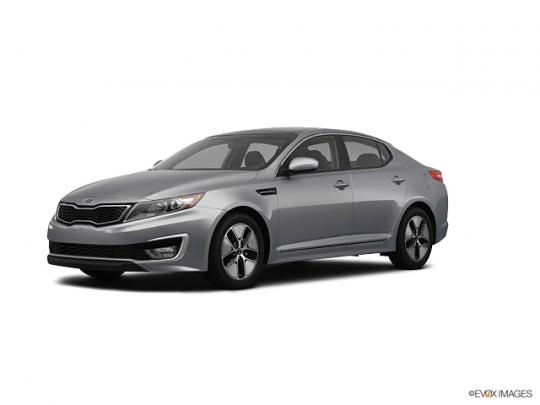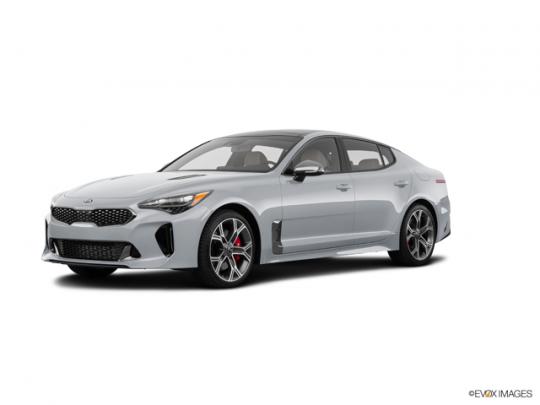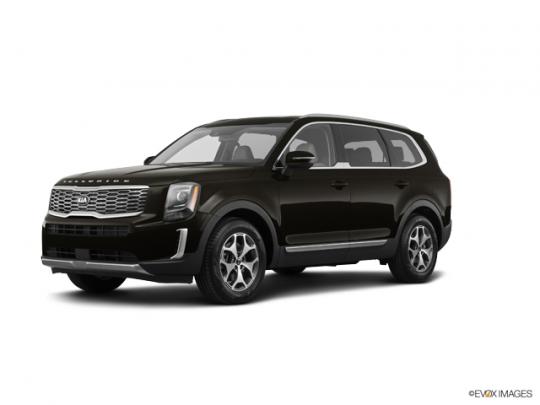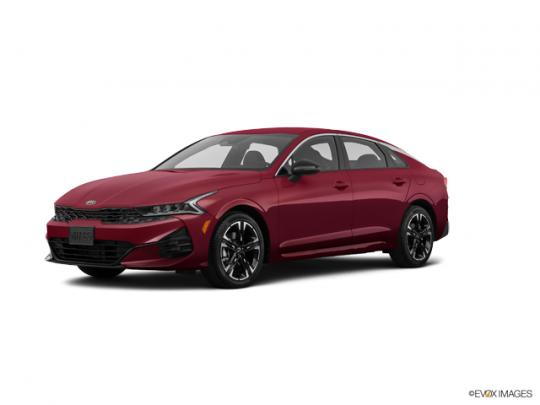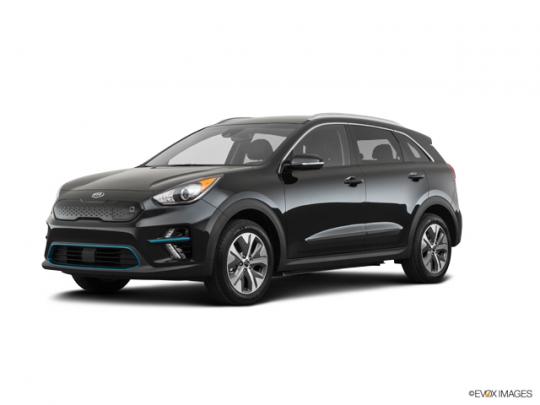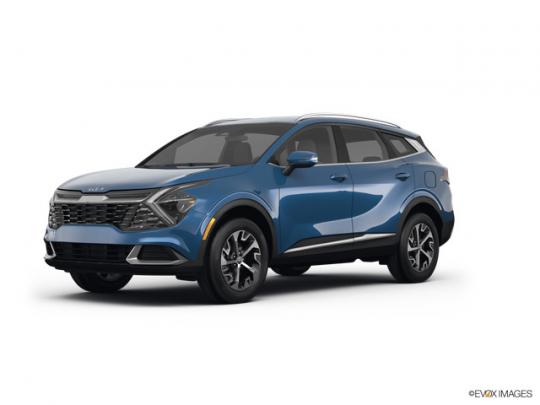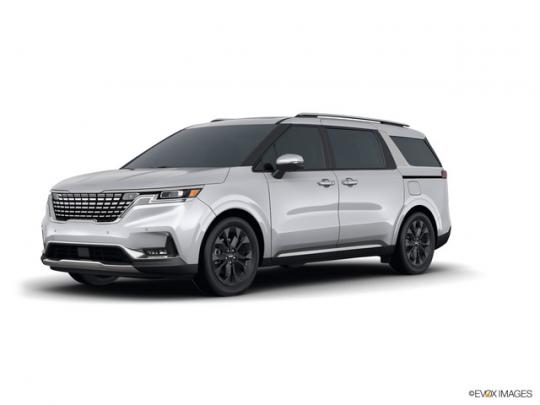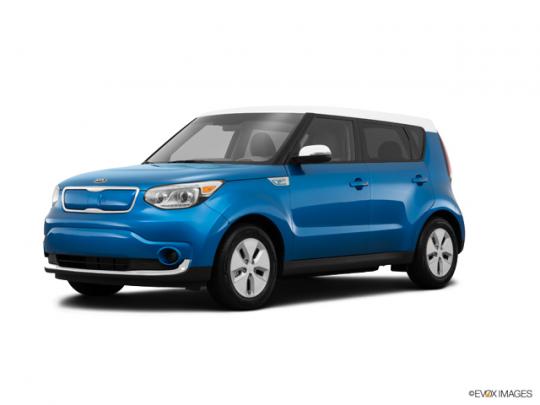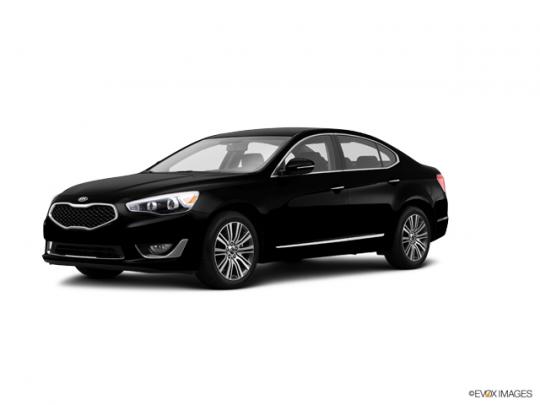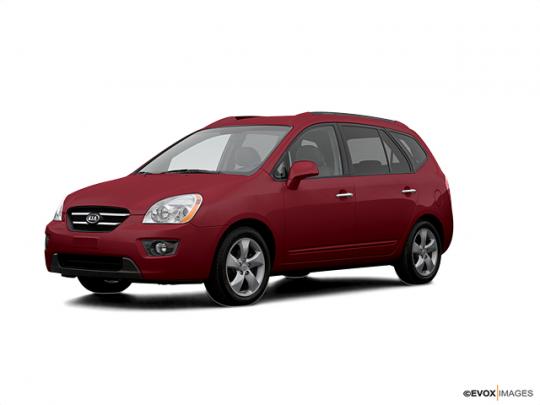About Kia Cars

Headquartered in Seoul, Korea, Kia Motors is the country’s second-largest automaker after Hyundai. Both companies own shares in one another; Hyundai owns 33 percent of Kia, valued at about $6 billion, and Kia owns stakes in some 20 Hyundai subsidiaries. The company was formed as Kyungsung Precision Industry in 1944 as a steel tube fabricating and bicycle manufacturer starting in 1951. In 1957 the company changed its name to Kia and started producing Honda licensed motorcycles. It also made Mazda trucks and cars in the 1960s and 1970s. In 1981 the company was forced to stop producing autos under military dictator Chun Doo-hwan, who limited Kia’s output until 1986.
A partnership with Ford helped Kia get back to work, making models that were sold in North America as Ford Festivas and Ford Aspires. The company incorporated in the U.S. in 1992, opening 100 dealerships in 30 states in short order. After going through bankruptcy in 1997 due to the Asian financial crisis, Hyundai purchased half of Kia (it has since shed portions, now owns about 33 percent). Kia opened a $1 billion manufacturing facility in Georgia in 2010.
Quick Facts
-
Kia Soul is the most-recalled Kia vehicle
-
Kia Sephia is the least expensive car from Kia starting from $ 8,495.00
-
Kia Niro has an MPG of 53 miles/gallon / 48 miles/gallon which is the highest gas mileage in the city and on highways
-
Kia Forte has the most trims available with 168 variations released
 Number of Kia Sales in the United States
Number of Kia Sales in the United States
 Kia U.S. Sales Reports - By Month
Kia U.S. Sales Reports - By Month
| Year | Jan | Feb | Mar | Apr | May | Jun | Jul | Aug | Sep | Oct | Nov | Dec |
|---|---|---|---|---|---|---|---|---|---|---|---|---|
| 2015 | 38,299 | 44,030 | 58,771 | 53,282 | 62,433 | 54,137 | 56,311 | 58,897 | 49,820 | 50,044 | 45,553 | 54,241 |
| 2016 | 38,305 | 49,737 | 58,279 | 56,508 | 62,926 | 62,572 | 59,969 | 54,248 | 49,220 | 48,977 | 52,504 | 54,353 |
| 2017 | 35,626 | 42,673 | 49,429 | 53,358 | 58,507 | 56,143 | 56,403 | 53,323 | 52,468 | 44,397 | 44,302 | 43,039 |
| 2018 | 35,628 | 40,672 | 50,645 | 50,585 | 59,462 | 56,571 | 53,112 | 53,864 | 51,503 | 45,102 | 45,101 | 47,428 |
| 2019 | 37,376 | 43,406 | 55,814 | 51,385 | 60,062 | 56,801 |
 Kia Car Sales in The United States from 2015 to 2019
Kia Car Sales in The United States from 2015 to 2019
| Year | Car Sales |
|---|---|
| 2015 | 625,818 |
| 2016 | 647,598 |
| 2017 | 589,668 |
| 2018 | 589,673 |
| 2019 | 304,844 |
 Average Pricing for Kia Popular models
Average Pricing for Kia Popular models
| Popular Kia Models | Average Price |
|---|---|
| Sorento | $ 24,183.97 |
| Sportage | $ 19,198.90 |
| Sedona | $ 23,048.91 |
| Spectra | $ 12,913.94 |
| Forte | $ 9,629.81 |
| Forte Koup | $ 17,623.81 |
| Rio5 | $ 14,136.16 |
| Spectra5 | $ 15,656.94 |
| Optima Hybrid | $ 13,796.81 |
| Forte 5-Door | $ 18,201.35 |
| Stinger | $ 43,178.46 |
| Telluride | $ 37,589.58 |
| K5 | $ 26,735.00 |
| Niro EV | $ 27,153.33 |
| Sportage Hybrid | $ 37,445.00 |
Interesting Facts About Kia

The Hyundai-Kia partnership produces about 7.2 million cars per year, putting the partnership in third place worldwide according to the number of vehicles produced. Only Volkswagen and Toyota rank higher. Hyundai ranks 10th worldwide in auto manufacturers for company value at about $25 billion.
Only the Kia Rio is available in base trim, meaning the most basic outfitting. That vehicle is a 1.6 liter, 100-horsepower, standard-shift transmission without the option for air conditioning. This very bare-bones vehicle costs about $11,000. The LX trim is available on Optima, Forte, and Rio models, offering larger automatic shift engines. The EX trim level is mid-level for Optimas and Fortes, providing enhanced paint options, audio systems, and wheel styles. SX trim is the highest level of options for Kia Forte and Optima sedans.
The Kia manufacturing plant at Hwaseong covers 34 million square feet and was opened in 1991. In its first ten years in operation, the plant turned out 3 million Kia vehicles. The facility includes a dozen test tracks with 32 different road surfaces and a high-speed oval.
Teen driving safety is the aim of the B.R.A.K.E.S. program (Be Responsible and Keep Everyone Safe), which Kia has sponsored in many communities across the U.S. New and learning drivers ages 15-17 are given driving lessons in a specialized environment using Kia vehicles. Offered since 2008, the program has reached 30,000 kids and has been shown to reduce teen accidents in their first three years of driving by about 64 percent.
The National Highway Transportation Administration opened an investigation into Kia models that allegedly burst into flames and for which there was no recall issued. The safety group received about 3,000 complaints about Kia and Hyundai vehicles, including several injuries and one death. Some drivers said their vehicles were stopped, and at times, the engine turned off when a fire erupted. The investigation covers some 3 million vehicles in the U.S.
The Kia Soul advertisements that feature dancing hamsters have been around for ten years now. An advertisement agency called David and Goliath is credited with probing the purchasing psyche of Millennials and coming up with the message. The hamsters were chosen to represent sameness, akin to running on a treadmill to nowhere, says one source. The result, some dealers reported, was a shortage of vehicles in dealerships.
A military division of Kia produces a variety of military vehicles for the Korean armed forces.
 How to Identify and Decode Kia VINs
How to Identify and Decode Kia VINs
World Manufacturer Identifier
The first three digits of the VIN number for any Kia vehicle are known as the World Manufacturer Identifier (WMI). The WMI describes the manufacturer, country of origin, and other relevant information. The WMI is assigned by the Society of Automotive Engineers (SAE) and is regulated by the National Highway Transportation Safety Administration (NHTSA).
The NHTSA identifies vehicles that are subject to safety recalls using the VIN. Drivers can always use the free VIN check provided by NHTSA to identify if their vehicle is subject to a safety recall.
Kia vehicles use the first character of the WMI to identify the geographical region where the vehicle was manufactured. The WMI information below applies to all Kia vehicles intended for the U.S. market.
Kia always uses the letter K, for Korea.
The second character identifies the specific manufacturer. For Kia, this will always be N, indicating Kia Motors Corp. as the manufacturing company.
The third digit identifies whether the vehicle is a passenger car or a multi-purpose vehicle. Kia uses the letter A for passenger cars and the letter D for MPVs.
Characters in positions four through eight identify specific features of the vehicle. These digits can reveal the engine, trim level, and safety equipment.
The fourth and fifth digits are the model identifier. Kia uses the following two-digit codes for current world-wide production vehicles
| 5P | Pride |
| BE | Picanto I |
| BJ | Picanto II |
| BX | Picanto I |
| CB, CC | Rio III |
| CE | Retona |
| DA | Pride |
| DB | Abela / Avella |
| DC | Rio I |
| DE, DG | Rio II |
| DT | Pride Van |
| EG, EH, EK | Venga |
| FA | Sephia (nepolnoprivodn) |
| FB | Sephia / Shuma / Spectra |
| FC | Carens (MPV) |
| FD | Carens |
| FF | C'eed I |
| FH | Cerato |
| FP | 5 Carens Van |
| FT, FU, FW | Cerato |
| GA | Concord |
| GB | Capital |
| GC | Clarus / Credos / Credos Park Town |
| GD | Magentis / Optima |
| GE | Magentis III |
| GM, GN | Optima III |
| HB, HC | C'eed I |
| HH | Carens II |
| HM, HN | C'eed II |
| JA | Sportage I (all wheel drive) |
| JB | Sportage I (nepolnoprivodn) |
| JC | Sorento I |
| JE | Sportage II |
| JG, JT | Soul |
| KH | Sportage III |
| KN | Mohave |
| KU | Sorento II |
| LA | Potentia |
| LB | Enterprise |
| LC | Enterprise Limousine |
| LD | Opirus |
| MA | Carnival / Carnival |
| MH | Carnival III |
| PB, PC | Sportage III |
| RA | Sportage (cargo) |
| SA | Bongo Frontier (cargo) |
| SA | Power Bongo (cargo) |
| SB | Ceres Bongo (cargo) |
| SC | Wide Bongo (commercial) |
| SP | Bongo (bus) |
| SR | Bongo Town (bus) |
| TA | Besta (commercial) |
| TB | Pregio (commercial) |
| TP | Besta (bus) |
| TR | Pregio (bus) |
| UA | Carnival (commercial) |
| UP | Carnival ( minivan) |
| WA | Super Titan (freight) |
| WB | Jumbo Titan (freight) |
| WC | Titan Trade (cargo) |
| WD | Titan (Load, 1.25 t) |
| XM | Joice |
Positions six and seven are used to denote the vehicle body type.
| 21 | sedan, two doors |
| 22 | sedan, 4 door |
| 23 | hatchback 3 door |
| 24 | hatchback, 5 doors |
| 31 | compartment, two doors |
| 32 | Coupe, 4 Door |
| 33 | hatchback 3 door |
| 34 | hatchback, 5 doors |
| 35 | 2 doors |
| 41 | hardtop, 2 doors |
| 42 | hard top, four doors |
| 43 | 3 door |
| 44 | 5 the door |
| 45 | 2 doors |
| 46 | 4 door |
| 47 | 2 doors |
| 48 | top, two doors |
| 49 | top, four doors |
| 51 | wagon 3 door |
| 52 | wagon, 5 doors |
| 53 | SUV (plastic top), two doors |
| 54 | SUV (tilt), two doors |
| 55 | SUV, four doors |
| 61 | 3 door combi |
| 62 | 5 doors combi |
| 63 | 2 door pickup |
| 71 | 4D, MPV |
| 72 | 4D, MPV, high roof |
| 73 | 4D, MPV |
| 74 | 4 door high roof |
| 75 | 5 the door |
| 81 | door 4 |
| 82 | 4 door high Single roof |
| 83 | door 4 |
| 84 | 4 door high roof |
| 85 | 5 doors |
Position eight identifies the engine. These codes are specific to models and body types, as identified earlier in the VIN.
| 1.25 Ton | |
| 1 | 2522 cc / 73 hp (XA) |
| 2 | 2701 cc / 75 hp (SS) |
| Abela / Avella | |
| 1 | 1323 cc / 73 (70) hp (B3 (EGI)) |
| 2 | 1498 cc / 92 (90) hp (B5 (SOHC)) |
| 3 | 1498 cc / 105 (100) hp (B5 (DOHC)) |
| Besta | |
| 0 | electric |
| 1 | 1998 cc / 65 hp (RF) |
| 2 | 2184 cc / 72 hp (R2) |
| 3 | 1784 cc / 97 hp (F8) |
| 4 | 1998 cc / 99 hp (FE) |
| is 5 | 2184 cc / 72 hp (HW) |
| 6 | 2662 cc / 80 hp (VN) |
| 7 | 2184 cc / 94 hp (F2) |
| Bongo (Power Bongo / Wide Bongo) | |
| 1 | 2209 cc / 60 hp (S2) |
| 2 | 1586 ccm (NA) |
| 3 | 2367 cc / 72 hp (SF) |
| 4 | 2665 cc / 80 hp (JS) |
| 5 | 2209 cc / 94 hp (F2) |
| 6 | 2665 cc / 83 hp (J2) |
| Bongo Frontier | |
| 1 | 2665 cc / 83 hp (J2) |
| 2 | 2957 cc / 92 hp (JT) |
| Bongo Town | |
| 1 | 1998 cc / 90 hp (TX) |
| 2 | 1415 cc / 65 hp (RF) |
| Carnival / Carnival | |
| 1 | 2902 cc / 135 hp (J3 TCI) |
| 2 | 2497 cc / 175 hp (K5) |
| 3 | 2497 cc / 150 hp (K5) |
| 4 | 2902 cc / 145 hp (J3) |
| Capital | |
| 1 | 1498 cc / 80 hp (B5 (CARB)) |
| 2 | 1498 cc / 115 hp (B5 (DOHC)) |
| 3 | 1789 cc / 95 hp (F8 (EGI)) |
| 4 | 1789 cc / 79 hp (F8 (LPG)) |
| Carens | |
| 1 | 1793 cc / 130 hp (TB (DOHC)) |
| 2 | 1793 cc / 108 hp (TL (DOHC LPG)) |
| 3 | 1975 cc / 123 hp (L4GC (DOHC)) |
| 4 | 1991 cc / 115 hp (D4EA (DOHC)) |
| Carens II | |
| 1 | 1998 cubic meters. cm / 168 hp (G4KA (DOHC)) |
| 4 | 1991 cubic meters. cm / 150 hp (D4EA) |
| Bed and | 1582 cubic meters. cm / 115 hp (D4FB) |
| C'eed I | |
| 1 | 1396 cubic meters. cm / 109 hp (G4FA (DOHC)) |
| 2 | 1591 cubic meters. cm / 122 (124) hp (G4FC (DOHC)) |
| 3 | 1975 cubic meters. cm / 142 hp (G4GC (DOHC)) |
| 4 | 1582 cubic meters. cm / 115 hp (D4FB) |
| 6 | 1591 cubic meters. cm / 122 hp (D4FB) |
| C'eed II | |
| 2 | 1582 cubic meters. cm / 103 hp (G4FC (DOHC)) |
| 6 | 1582 cubic meters. cm / 115 hp (D4FB) |
| Cerato | |
| 1 | 1591 cubic meters. cm / 126 hp (G4FC (DOHC)) |
| 2 | 1998 cubic meters. cm / 164 hp (G4KD (DOHC)) |
| 3 | 1591 cubic meters. cm / 126 hp (G4FC (DOHC)) |
| Ceres | |
| 1 | 2209 cc / 60 hp (S2) |
| 2 | 2367 cc / 60 hp (SC) |
| Concord | |
| 1 | 1789 (F8 (CARB)) |
| 2 | 1998 cc / 99 hp (FE (EGI)) |
| 3 | 1998 cc / 65 hp (RF) |
| 4 | 1789 cc / 79 hp (F8 (LPG)) |
| is 5 | 1789 cc / 95 hp (F8 (EGI)) |
| 6 | 1998 cc / 139 hp (FE (DOHC)) |
| 7 | 1,998 cc / hp 88 (FE (LPG)) |
| Credos | |
| 1 | 1998 cc / 116 (110) HP (FE (SOHC)) |
| 2 | 1998 cc / 148 (146) HP (FE (DOHC)) |
| 3 | 1793 cc / 137 (130) hp (T8 (DOHC)) |
| 4 | 1793 cc / 110 (108) hp (T8 (LPG)) |
| is 5 | 1996 ccm, V6 / 150 hp (KZ) |
| 6 | TG (DOHC) |
| 7 | 2.5 l, V6 (K5) |
| 8 | 1998 cc / 120 hp (FE (DOHC LPG)) |
| 9 | 1998 cc (FE (DOHC)) |
| Enterprise | |
| 1 | 2954 cc / 205 (182) HP (JZ (DOHC)) |
| 2 | 3605 cc / 230 (205) hp (J6 (DOHC)) |
| 3 | 2494 cc / 175 (151) hp (J5 (DOHC)) |
| 4 | 1998 ccm (FE (DOHC)) |
| 5 | 2954 cc / 194 hp (JO (DOHC)) |
| 6 | 3605 cc / 220 hp (JL (DOHC)) |
| 7 | 2494 cc / 170 hp (JF (DOHC)) |
| 8 | 2497 cc, V6 / 175 hp (K5) |
| Jumbo Titan | |
| 1 | 2522 cc / 73 hp (XA) |
| 2 | 2977 cc / 78 hp (HA) |
| 3 | 3455 cc / 94 hp (SL) |
| 4 | 3455 cc / 94 hp (SL1) |
| 5 | 3455 cc / 94 hp (SL2) |
| 6 | 2701 cc / 75 hp (SS) |
| 7 | 3455 cc / 92 hp (SL3) |
| Magentis II | |
| 7 | 1998 cubic meters. cm / 164 hp (G4KD (DOHC)) |
| Mohave | |
| 1 | 3778 cubic meters. cm / 274 hp (G6DA (DOHC)) |
| 3 | 2959 cubic meters. cm / 250 hp (D6EA) |
| 4 | 2959 cubic meters. cm / 250 hp (D6EB) |
| Optima | |
| 1 | 1836 cc / 134 hp (G4JN (DOHC)) |
| 2 | 1997 cc / 149 hp (G4JN (DOHC)) |
| 3 | 1997 cc / 95 hp (L4JP (SOHC)) |
| 4 | 2493 ccm, V6 / 176 hp (G6BV) |
| 5 | 2.0 l, DOHC |
| 6 | 2.4 l (Australia) |
| 7 | 2.5 l, V6 |
| 8 | 2.7 l, V6 (US / Australia) |
| 9 | 1975 ccm |
| A | 1.8 l, DOHC |
| Optima III | |
| 1 | 1998 cubic meters. cm / 164 hp (G4KD (DOHC)) |
| 2 | 2359 cubic meters. cm / 200 hp (G4KE (DOHC)) |
| 4 | 1685 cubic meters. cm / 115 hp (D4FD) |
| Picanto I | |
| 3 | 1086 cubic meters. cm / 65 hp (G4HG (12v)) |
| Picanto II | |
| 2 | 1248 cubic meters. cm / 85 hp (G4LA (DOHC)) |
| 5 | 998 cubic meters. cm / 69 hp (G3 ...) |
| Potensia | |
| 1 | 2184 cc / 120 hp (F2 (3V)) |
| 2 | 2954 cc / 200 (177) hp (JE (DOHC)) |
| 3 | 1998 cc / 139 (136) hp (FE (DOHC)) |
| 4 | 2184 cc / 94 hp (F2 (LPG)) |
| is 5 | 1998 cc / 120 (119) hp (F2 (DOHC)) |
| 6 | 2494 cc / 175 hp (J5 (DOHC)) |
| 7 | 2003 cc / 119 hp (FE (DOHC)) |
| Praide | |
| 1 | 1139 cc / 62 hp (B1) |
| 2 | 1323 cc / 69 hp (B3 (the CARB)) |
| the K | 1323 cc / 73 hp (B3 (EGI)) |
| 3 | 1498 cc / 69 hp (B5 (LPG)) |
| 4 | electromotor |
| Pregio | |
| 1 | 2665 cc / 8S hp (J2) |
| 2 | 2957 cc / 92 hp (JT) |
| 3 | HF |
| 4 | HF (LPG) |
| Rio / Rio RX | |
| 1 | 1343 cc / 84 hp (A3E (EGI)) |
| 2 | 1493 cc / 95 hp (A5E (SOHC)) |
| 3 | 1493 cc / 108 hp (A5D (DOHC)) |
| Rio II | |
| 1 | 1396 cubic meters. cm / 109 hp (G4EE (DOHC)) |
| 4 | 1493 cubic meters. cm / 110 hp (D4FA) |
| III Rio | |
| A | 1396 cubic meters. cm / 110 hp (G4FA (DOHC)) |
| Bed and | 1591 cubic meters. cm / 122 (126) hp (G4FC (DOHC)) |
| Sephia / Chuma / Spectra | |
| 1 | 1498 cc / 92 (90) hp (B5 (SOHC)) |
| 2 | 1498 cc / 105 (101) hp (B5 (DOHC)) |
| 3 | 1793 cc / 139 (130) hp (TE (DOHC)) |
| 4 | 1998 cc / 148 (146) HP (FE (DOHC)) |
| 5 | 1493 cc / 96 hp (S5E (SOHC)) |
| 6 | 1493 cc / 108 hp (S5D (DOHC)) |
| Sorento (BL) | |
| 1 | 2.5 l, 140 hp |
| 2 | L 2.4 |
| 3 | 3.5 l, V6 |
| Sorento II | |
| 1 | 2349 cubic meters. cm / 174 hp (G4KE (DOHC)) |
| 4 | 2497 cc / 170 hp (D4CB) |
| Soul | |
| 1 | 1591 cubic meters. cm / 124 hp (G4FC (DOHC)) |
| 1 | 1591 cubic meters. cm / 122 hp (G4FG (DOHC)) |
| 3 | 1582 cubic meters. cm / 115 hp (D4FB) |
| Sportage | |
| 1 | 1998 cc / 99 hp (FE (EGI)) |
| 2 | 1998 cc / 99 (97) hp (FE (EGI)) |
| 3 | 1998 cc / 139 (136) hp (FE (DOHC)) |
| 4 | 2184 cc / 70 hp (HW) |
| 5 | 1998 cc / 65 hp (MA) |
| 6 | 1998 cc / 91 (87) HP (RT) |
| 7 | 1998 cc / 93 (90) hp (RE) |
| 8 | 1998 cc / 139 hp (FE (DOHC)) |
| 9 | CNG |
| Sportage II / III | |
| 1 | 1991 cubic meters. cm / 150 hp (D4EA) |
| 2 | 1975 cubic meters. cm / 142 hp (G4GC (DOHC)) |
| Super Titan | |
| 1 | 2522 cc / 73 hp (XA) |
| 2 | 2977 cc / 78 hp (HA) |
| Trade | |
| 1 | 3455 cc / 94 hp (SL) |
| 2 | 3455 cc / 94 hp (SL1) |
| 3 | 3455 cc / 94 hp (SL2) |
| Venga | |
| 1 | 1591 cubic meters. cm / 122 hp (G4FA (DOHC)) |
| 2 | 1591 cubic meters. cm / 122 hp (G4FC (DOHC)) |
| 3 | 1396 cubic meters. cm / 75 hp (D4FC) |
Position nine is used as the check digit for U.S. vehicles. This character will be a number between 0 and nine, or the letter X. The check digit represents the result of an algorithm that uses the numbers and letters in the VIN to provide a means of verifying the validity of the VIN. A VIN number can be verified using the free NHTSA VIN Check Digit Lookup.
Position 10 is used to denote the model year. The following codes are used for U.S. vehicles:
| A | 1980, 2010 |
| B | 1981, 2011 |
| C | 1982, 2012 |
| D | 1983, 2013 |
| E | 1984, 2014 |
| F | 1985, 2015 |
| G | 1986, 2016 |
| H | 1987, 2017 |
| J | 1988, 2018 |
| K | 1989, 2019 |
| L | 1990, 2020 |
| M | 1991, 2021 |
| N | 1992, 2022 |
| P | 1993, 2023 |
| R | 1994, 2024 |
| S | 1995, 2025 |
| T | 1996, 2026 |
| U | 1997, 2027 |
| W | 1998, 2028 |
| X | 1999, 2029 |
| Y | 2000, 2030 |
| 1 | 2001, 2031 |
| 2 | 2002, 2032 |
| 3 | 2003, 2033 |
| 4 | 2004, 2034 |
| 5 | 2005, 2035 |
| 6 | 2006, 2036 |
| 7 | 2007, 2037 |
| 8 | 2008, 2038 |
| 9 | 2009, 2039 |
Position 11 identifies the specific factory at which the vehicle was built. The following codes are used by Hyundai to denote factories:
| 5 | Hwa-Sung, Korea |
| 6 | Sohari, Korea |
| 7 | Korea |
| A | Hwa-Sung, Korea |
| D | Karmann (Sportage), Deutschland |
| J | Ostrava Hrabova, Czech Republic |
| L | Zilina, Slovakia |
| R | St. Petersburg , Russia |
| S | Sohari, Korea |
| T | Korea |
The remaining characters in positions 12 through 17 are the vehicle serial number. The serial number is not consecutive and does not indicate whether a vehicle is an early or late production model but does allow for identifying where in the production sequence the vehicle was made. This is useful when identifying defects.
 Safety and Recalls for Kia Cars
Safety and Recalls for Kia Cars
Nearly 1,000,000 Kia vehicles have been recalled for issues with the brake light switch. The brake light may not illuminate when the brake is applied, and related electrical switch issues may prevent proper functioning of the push-button start feature as well. The following vehicles are affected:
- 2007-2010 Kia Rondo,
- 2007-2011 Kia Sedona, Sorento, and Sportage,
- 2010-2011 Kia Soul,
- 2008-2011 Kia Optima,
- 2010 Kia Forte,
- 2007-2009 Kia Amanti, and
- 2009 Kia Borrego vehicles.
This is in addition to a previous recall affecting the following:
- 2007-2010 Kia Rondo and Sportage,
- 2007-2011 Kia Sorento,
- 2007 Kia Sedona,
- 2010-2011 Kia Soul, and
- 2011 Kia Optima vehicles.
A clutch part is known to malfunction in 2017 Kia Niro Hybrid SUVs allowing an oil seal to leak, potentially increasing the possibility of fire through an electrical short.
Accessory trailer hitches on 2017 Kia Sportage models are recalled because an issue may cause the trailer brake lights may malfunction and not shut off.
The power sliding door on 2017 Kia Sedona minivans has been recalled for a malfunction that may not allow them to reverse as they should.
The accelerator function in 2016 Kia Sorento SUVs have been recalled for an issue that may not allow for proper acceleration.
A serious steering problem may result from gear separation on 2015 Kia Soul and Kia Soul EV SUVs prompting a recall to reduce the risk of a crash.
An issue during the manufacture of engines in 2011-2014 Kia Optima, 2012-2014 Kia Sorento and 2011-2013 Kia Sportage vehicles prompted a recall to repair the possibility of premature wear of bearings that could result in engine failure.
Hood latches on 2006-2014 Kia Sedona vehicles manufactured from June 15, 2005, through April 04, 2014, have been recalled for malfunctioning as a latch may not catch as designed when the hood is closed.
Certain model year 2006-2012 Kia Sedona vehicles have been recalled for damage from road salt corrosion. These vehicles were manufactured from June 15, 2005, through August 14, 2012 and originally sold in, or currently registered in Alaska, Connecticut, Delaware, Illinois, Indiana, Iowa, Kansas, Kentucky, Maine, Maryland, Massachusetts, Michigan, Minnesota, Missouri, Nebraska, New Hampshire, New Jersey, New York, North Dakota, Ohio, Pennsylvania, Rhode Island, South Dakota, Utah, Vermont, West Virginia, Wisconsin and the District of Columbia.
 Kia Recalls
Kia Recalls
Kia had 1321 from 1980 to 2025 of which the most recalled model is 2019 Kia Sportage and the least is 2016 Kia K900. Kia had the most recalled during 2017.
| Model | Number of Recalls |
|---|---|
| 2019 Kia Sportage #1 with most recalls | 8 |
| 2009 Kia Sedona #2 with most recalls | 5 |
| 2002 Kia Sedona #3 with most recalls | 3 |
| 2021 Kia Soul #4 with most recalls | 2 |
| 2016 Kia Sedona #5 with most recalls | 2 |
| 2010 Kia Optima #6 with most recalls | 2 |
| 2005 Kia Sedona #7 with most recalls | 2 |
| 2011 Kia Sorento #8 with most recalls | 11 |
| 2016 Kia K900 #9 with most recalls | 1 |


